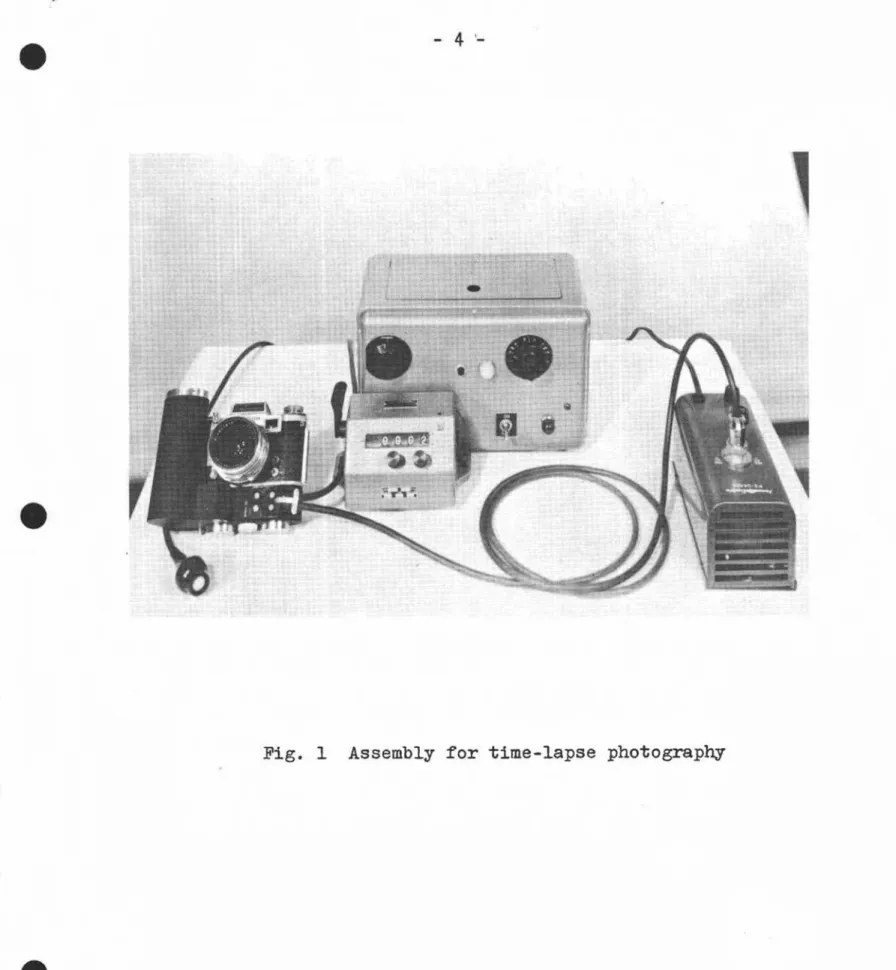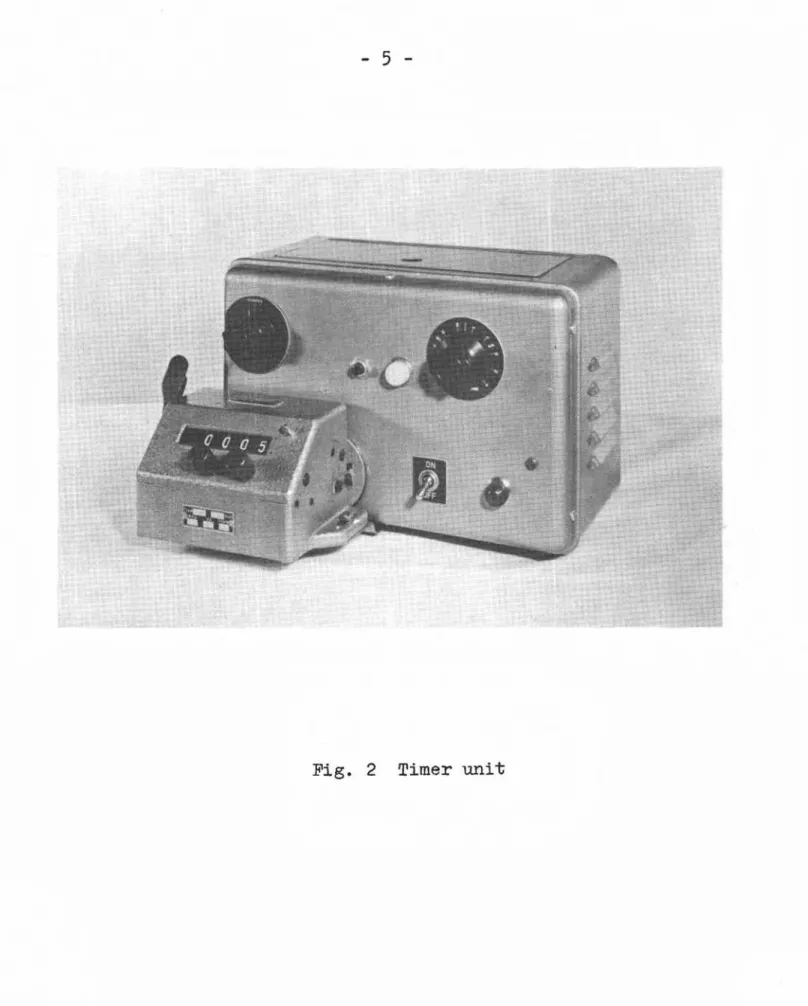Publisher’s version / Version de l'éditeur:
Technical Note (National Research Council of Canada. Division of Building Research), 1959-06-10
READ THESE TERMS AND CONDITIONS CAREFULLY BEFORE USING THIS WEBSITE. https://nrc-publications.canada.ca/eng/copyright
Vous avez des questions? Nous pouvons vous aider. Pour communiquer directement avec un auteur, consultez la
première page de la revue dans laquelle son article a été publié afin de trouver ses coordonnées. Si vous n’arrivez pas à les repérer, communiquez avec nous à PublicationsArchive-ArchivesPublications@nrc-cnrc.gc.ca.
Questions? Contact the NRC Publications Archive team at
PublicationsArchive-ArchivesPublications@nrc-cnrc.gc.ca. If you wish to email the authors directly, please see the first page of the publication for their contact information.
NRC Publications Archive
Archives des publications du CNRC
For the publisher’s version, please access the DOI link below./ Pour consulter la version de l’éditeur, utilisez le lien DOI ci-dessous.
https://doi.org/10.4224/20338455
Access and use of this website and the material on it are subject to the Terms and Conditions set forth at
Timer for time-lapse photography Slade, H. F.; Sereda, P. J.
https://publications-cnrc.canada.ca/fra/droits
L’accès à ce site Web et l’utilisation de son contenu sont assujettis aux conditions présentées dans le site LISEZ CES CONDITIONS ATTENTIVEMENT AVANT D’UTILISER CE SITE WEB.
NRC Publications Record / Notice d'Archives des publications de CNRC: https://nrc-publications.canada.ca/eng/view/object/?id=dd58c980-9a13-4173-a7ef-f4ec063a61da https://publications-cnrc.canada.ca/fra/voir/objet/?id=dd58c980-9a13-4173-a7ef-f4ec063a61da
DIVISION OF BUILDING RESEARCH
'fE
C
1HIN II CAlL
NATIONAL RESEARCH COUNCIL OF CANADA
ili
No.
278N ()'I'
:---,----1--
_ INOT FOR PUBLICATION
PREPARED BY H. F. Slade and CHECKED BY
Po J.
Sereda-PREPARED FOR General Distribution.
FOR INTERNAL USE APPROVED BY NBH DATE June 10, 1959.
SUBJECT Timer for Time-lapse Photography
The Division has undertaken studies such as the propaga-tion of fire in buildings where photographs taken at predetermined intervals would be of assistance in making observations. Because the interval between successive exposures during such experiments could be much longer than that obtained with a movie camera it Was decided that a time-lapse camera system would be much more practical. Not only is the initial cost of such a system lower than the cost of a'movie camera but also the processing of the results obtained on film is easier.
The camera bought for this purpose was a Praktina FX, f/2.8, 50 mm lens, equipped with a 50 foot capacity bulk-film magazine and an electric motor-magnetic remote control unit.
To complete the system for time-lapse photography, it was necessary to provide a timer which would trigger the remote-control unit on the camera repeatedly at a predetermined interval and also stop the system after a predetermined number of exposures. A timer of the mechanical type was decided upon because a very wide range of time intervals could be provided thus making the system more versatile. It was realized that some accuracy of timing would be sacrificed at the low end but it was considered
justified for the present requirements.
The characteristics of the remote-control Unit on the camera are such as to require a minimum "on" of about 1/2 second for proper functioning of the solenoid and rewind motor and an "off n interval of about 1/2 second to allow the rewind operation to be completed. The longest non" period allowed is 10 seconds with which a 1 minute "off't interval is reqUired to allow the motor to cool.
Since the purpose of this photographic system is to record action, it is logical to assume that the actual exposure will be accomplished by the camera shutter speed mechanism in the range of 1/5 to 1/1000 second and that adequate lighting, such as
2
-from an eJectJ:onic flash, will have to be provided. This being the case the proposed 1/2 second "on" provided by the auxiliary timer will be adequate and can be constant for all exposures. This is provided in the timer system through an adjustable
Time Delay Timer, in the range of 0 to 15 seconds designated as Hayden No. 5901-1.
The "off" intervals of the timer system, being the time-lapse between exposures, are prOVided by means of a repeat
cycle timer consisting of notched cams driven at constant speeds and operating micro switches. The "off" セョエN・イカ。ャ can be varied by selecting the appropriate cam and switch combina-tion. The "off" intervals provided in this timer system are: 5, 15, 30, and 60 seconds; also 5, 15, 30, and 60 minutes. The range up to 1 minute is prOVided by means of Repeat Cycle Timer, Hayden No. 5800 consisting of
4
cams driven at 1 RPM. The range up to 1 hour is provided by means of Repeat Cycle Timer, Hayden No. 5800 consisting of4
cams driven at 1 RPH.To stop the camera system at the 」ッューャ・セゥッョ of a pre-determined number of exposures, a predetermining electric
counter, made by J. Hengstler Co. and supplied by Electrodesign Ltd., is used.
The complete assembly is shown in Fig. 1 and the timer alone in Fig. 2. The electrical wiring セッイ the system is given in Fig.
3.
Exposures at the various "off" time intervals were made of an electric clock and the accuracy of the timing was
determined from the film. The error was greatest for the 5
second and 5 minute intervals, which correspond to the cams with 12 notches, and was between 5 to 10 per cent. The error for the remaining intervals was smaller and was insignificant for the single' notched cam such as used for the 1 minute
interval. In any sequence of exposures two exposures separated by a total time interval of either 1 minute or 1 hour can be used as exact time reference.
Instructions for Operation
I. Connect camera to timer through the Jones plug. 2. Set left hand dial to reference point if intervals
over 1 minute are used.
3.
Set right hand dial to desired interval (time-lapse).4.
Pre-set on the counter the desired number of exposures by depressing the key on the left andturning the knobs in front. Once the counter is set, if the same nUmber of exposures are to be repeated,' simply depress the key.
3
-5.
Depress red key and hold down until white pilot light turns off while turning power on or sWitching the . time interval dial.6. The hand switch is at all times in parallel connection with the automatic switches of the timer and can be used to make an exposure.
- 4
セ(
5
•
e
e
... COIL [COUNTER SWITCH S.P.ST. N.C. NEON #51 (WHITE)r----'
. I D.P.S.T. MICRO SWITCH N. C. 8 POSITIONS SELECTORSWITCH r-HAYDON TIME DELAY TIMER
15 SECONDS (I GRADUATION =1·5 SEC.)
NEON #51 (GREEN)
22 K:.n..
セ WATT
TWO HAYDON REPEAT
CYCLE TIMERS, 4 GANG,
I RPH, I RPM OUTLET RECEPTACLE
I/O V. AC.
r--
IセMMMイMMMイエMMエイMMMエMエMKMセZZMMMMMKMMMMMMMMMMMML
I
セ CAMERA PUSH TYPEMOMENT-110V. A.C.
I
I .
t
PLUGt
ARY CONTACT60

